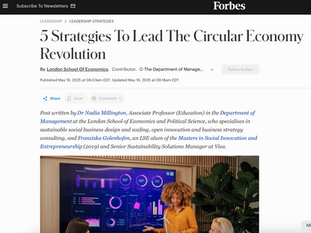Am I ready for the auditors? We had that question a lot next to What should I prioritize? What are the main topics to focus on to make sure I have a constructive exchange with my auditors? Well, we put together 12 key points in a form of a checklist based on our most recent interactions with auditors, other consulting peers, and professionals

✅ Direct your efforts towards a solid Double Materiality Assessment (DMA)
Auditors will not check all details and all data. They will focus on the line of reasoning and the documentation. And it starts with your DMA. Define the quality process and ensure its transparency.
✅ Engage with your auditors as early as possible
Share your methodology and ask for feedback upfront.
✅ Establish and/or formalize your existing ESG governance
Assign clear responsibilities, meetings where it’s discussed and define how you track progress and deviations.
✅ Document everything you are doing
For your IRO: capture who was involved (which functions), timelines, and supporting evidence (sources, links, reports) that led to any decisions.
✅ Clearly identify and define your Impacts, Risks, and Opportunities
Differentiate positive and negative impacts, risks vs. opportunities, potential vs. actual and assess their implications for your activities specifically (e.g. Global warming doesn’t impact a food producer the same way as a truck manufacturer).
Gentle reminder: the mitigation of a negative impact is not a positive impact.
✅ If a topic is material and you don’t have all metrics and policies at hand: then disclose your plan
Explain how you’ll address gaps and prepare for compliance in the future.
✅ Integrate ESG Risk Management into your broader Risk Framework
Align ESG with legal, financial, reputational, and operational risks.
✅ Adapt valuation scales to fit your business size and value chain complexity
Avoid overly complex or irrelevant calculations that no one will be able to follow or replicate.
✅ Assess against absolute impact
Prioritize full financial valuation over the mitigated impacts (e.g. assess full financial impact on asset and revenues in case of sudden flooding, without considering mitigation plans such as transferring production or building a damn or activating your insurance).
✅ Avoid averaging conflicting inputs when doing valuation & ratings
When interviewing your stakeholders, make sure you don’t end up with a collection of feelings and opinions – unfortunately you cannot easily and mathematically reconcile different valuations on the same topic. In other terms: If your Head of Sales and CEO gives a 2 to shortages of Drivers but your head of HR and CFO give it a 5. It’s not 3,5. It’s not how it works. Instead, you will have to reassess ratings against the business context, financial impact, and strategic priorities.
✅ Highlight connections between Financial and Sustainability Statements.
Ensure clear links between CSRD disclosures and financial provisions.
✅ Digitize and tag your report
Follow the CSRD guidelines (e.g. section 8.2 and Appendix D).
Author : Helene Trehin Isermeyer
Reviewer : Henri Cuin and peers






